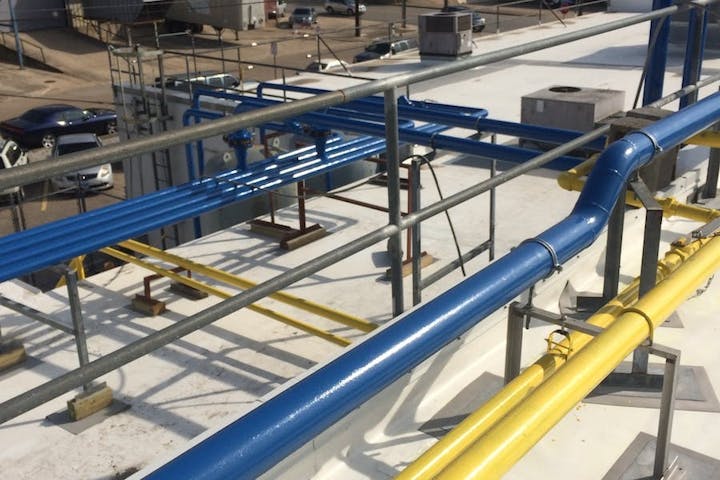OSHA Color Coding Compliance - Optimize Your Workplace Safety.
From pipe labeling to hazard marking, we ensure your environment not only meets safety regulations but also promotes efficiency and clarity for all employees. Discover how our tailored solutions can safeguard your team and streamline operations.
From pipe labeling to hazard marking, we ensure your environment not only meets safety regulations but also promotes efficiency and clarity for all employees. Discover how our tailored solutions can safeguard your team and streamline operations.






Navigating the complexities of OSHA color coding regulations can be a daunting task for any facility. Our services are designed to demystify these requirements, offering a comprehensive suite of color-coding solutions that enhance workplace safety and compliance.
Whether it’s vivid floor markings, clearly labeled pipes, or hazard signs, our goal is to make your facility a model of safety and operational excellence. Let Painters USA guide you through the process of implementing effective and compliant safety color schemes, ensuring your team is protected and your operations run smoothly.
Benefits of protective coating barriers
- Thermal insulative: Keeps the required temperature, hot or cold, inside the pipe to save energy and reduce energy costs.
- Heat reflective: Keeps the contents of your piping cool by keeping the heat out.
- Corrosion and rust control: Protects exterior piping from rust and corrosion caused by moisture and exposure to the elements.

Improve Safety Compliance Now
Don’t wait until an audit reveals compliance gaps or an accident occurs. Our expert team is on-hand to help you navigate OSHA regulations with ease, implementing effective safety color-coding that protects your workforce and avoids costly fines. Elevate your safety standards today.
Painting for OSHA color codes
Painters USA offers OSHA color coding painting services to help you identify the different materials running through your facility piping.

Flammable fluids and gases

Fire-quenching fluids (sprinkler lines)

Toxic or corrosive fluids and gases

All water

All air

Combustible fluids and gases
Problems You Have That We Can Solve
Ensure your facility meets OSHA regulations with properly coded signage. Non-compliance can lead to fines and increased accidents. Our color coding services guarantee compliance and enhance safety.
Hazardous areas without clear markings pose serious risks. We provide vivid, durable solutions that clearly mark hazards, reducing the risk of workplace accidents and ensuring employee safety.
Unidentified pipes can be a source of confusion and danger, especially in an emergency. Our pipe labeling services make it easy to identify contents and flow direction at a glance.
Without clearly defined safety zones, the risk of accidents involving equipment increases. Our color coding services help designate safe operating areas, protecting both personnel and machinery.
Why choose Painters USA?
Maintenance is disruptive. You need a team that gets in and out ASAP. That’s why we pride ourselves with our large, well-trained crews that meet your deadlines and minimize downtime – our speciality!
Being on-budget is as important as being on-time, so we prepare accurate estimates and bids for no unwanted surprises.
We aim to meet or exceed quality expectations, backed by warranties and recommending the best materials to balance performance and costs.
For convenience and single-point-accountability, we have the resources and capacity to work across multiple sites in the US, including remote / rural locations.
Our commitment to safety—backed by ISN RAVS Plus® status and an exemplary TRIR rating—reduces workplace hazards and legal / financial risks in your facilities.
Painters USA is fully licensed and insured, and our crews are full-time employees who have undergone thorough background checks.
We are happy to share client references based on your industry or facility challenges and goals for the greatest relevance to your situation.
As a woman-owned business, we can help you diversify and expand your supplier network.
Our happy clients. Both big and small

Secure Your Facility's Future.
Future-proof your facility against potential safety challenges with our comprehensive OSHA color coding services. Protect your team, reduce accident risks, and ensure a safer, more compliant workplace environment. Let’s work together to secure a safer future for your facility.
Future-proof your facility against potential safety challenges with our comprehensive OSHA color coding services. Protect your team, reduce accident risks, and ensure a safer, more compliant workplace environment. Let’s work together to secure a safer future for your facility.





